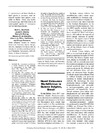Identificador persistente para citar o vincular este elemento:
https://accedacris.ulpgc.es/jspui/handle/10553/45730
| Campo DC | Valor | idioma |
|---|---|---|
| dc.contributor.author | Groch, Kátia R. | en_US |
| dc.contributor.author | Colosio, Adriana C. | en_US |
| dc.contributor.author | Marcondes, Milton C C | en_US |
| dc.contributor.author | Zucca, Daniele | en_US |
| dc.contributor.author | Diaz Delgado, Josue | en_US |
| dc.contributor.author | Niemeyer, Claudia | en_US |
| dc.contributor.author | Marigo, Juliana | en_US |
| dc.contributor.author | Brandão, Paulo E. | en_US |
| dc.contributor.author | Fernández Rodríguez, Antonio Jesús | en_US |
| dc.contributor.author | Catão-Dias, José Luiz | en_US |
| dc.contributor.other | Fernandez, Antonio | - |
| dc.contributor.other | Catao-Dias, Jose Luiz | - |
| dc.date.accessioned | 2018-11-22T12:08:50Z | - |
| dc.date.available | 2018-11-22T12:08:50Z | - |
| dc.date.issued | 2014 | en_US |
| dc.identifier.issn | 1080-6040 | en_US |
| dc.identifier.uri | https://accedacris.ulpgc.es/handle/10553/45730 | - |
| dc.description.abstract | Since 1987, morbillivirus (family Paramyxoviridae, genus Morbillivirus) outbreaks among pinnipeds and cetaceans in the Northern Hemisphere have caused high rates of death (1,2). Two morbillivirus species are known to affect aquatic animals: Phocine distemper virus (PDV) and Cetacean morbillivirus (CeMV). PDV has been isolated from pinnipeds, and 3 strains of CeMV (porpoise morbillivirus [PMV], dolphin morbillivirus [DMV], and pilot whale morbillivirus [PWMV]) have been isolated from dolphins and whales (3,4). Serologic surveys indicate that morbilliviruses infect marine mammals worldwide (5); however, only 1 fatal case in a bottlenose dolphin (Tursiops truncatus) has been confirmed in the Southern Hemisphere (in the southwestern Pacific Ocean) (6). Positive DMV-specific antibody titers in 3 Fraser’s dolphins (Lagenodelphis hosei) stranded off Brazil and Argentina in 1999 indicate the exposure of South Atlantic cetaceans to morbillivirus (7). We report a case of lethal morbillivirus infection in a Guiana dolphin (Sotalia guianensis), a coastal marine and estuarine species that occurs off the Atlantic Coast of South and Central America. | en_US |
| dc.language | eng | en_US |
| dc.publisher | 1080-6040 | |
| dc.relation.ispartof | Emerging Infectious Diseases | en_US |
| dc.source | Emerging Infectious Diseases [ISSN 1080-6040],v. 20 (3), p. 511-513 | en_US |
| dc.subject | 310907 Patología | en_US |
| dc.subject.other | Morbillivirus | en_US |
| dc.subject.other | Guiana dolphin | en_US |
| dc.subject.other | Brazil | en_US |
| dc.title | Novel cetacean morbillivirus in Guiana Dolphin, Brazil | en_US |
| dc.type | info:eu-repo/semantics/annotation | es |
| dc.type | Article | es |
| dc.identifier.doi | 10.3201/eid2003.131557 | |
| dc.identifier.scopus | 84894271626 | - |
| dc.identifier.isi | 000332433900039 | - |
| dcterms.isPartOf | Emerging Infectious Diseases | |
| dcterms.source | Emerging Infectious Diseases[ISSN 1080-6040],v. 20 (3), p. 511-513 | |
| dc.contributor.authorscopusid | 37072358500 | - |
| dc.contributor.authorscopusid | 55485985700 | - |
| dc.contributor.authorscopusid | 26433619500 | - |
| dc.contributor.authorscopusid | 56006896100 | - |
| dc.contributor.authorscopusid | 54787562800 | - |
| dc.contributor.authorscopusid | 36619824400 | - |
| dc.contributor.authorscopusid | 24281545500 | - |
| dc.contributor.authorscopusid | 55916312600 | - |
| dc.contributor.authorscopusid | 56673009900 | - |
| dc.contributor.authorscopusid | 6602455809 | - |
| dc.description.lastpage | 513 | - |
| dc.description.firstpage | 511 | - |
| dc.relation.volume | 20 | - |
| dc.investigacion | Ciencias de la Salud | en_US |
| dc.type2 | Comentario | en_US |
| dc.identifier.wos | WOS:000332433900039 | |
| dc.contributor.daisngid | 2038184 | - |
| dc.contributor.daisngid | 6359637 | - |
| dc.contributor.daisngid | 1548640 | - |
| dc.contributor.daisngid | 3595139 | - |
| dc.contributor.daisngid | 1111754 | - |
| dc.contributor.daisngid | 3842150 | - |
| dc.contributor.daisngid | 1562241 | - |
| dc.contributor.daisngid | 336197 | - |
| dc.contributor.daisngid | 176520 | - |
| dc.contributor.daisngid | 4760577 | |
| dc.contributor.daisngid | 355740 | - |
| dc.identifier.investigatorRID | G-3448-2015 | - |
| dc.identifier.investigatorRID | C-4897-2012 | - |
| dc.contributor.wosstandard | WOS:Groch, KR | |
| dc.contributor.wosstandard | WOS:Colosio, AC | |
| dc.contributor.wosstandard | WOS:Marcondes, MCC | |
| dc.contributor.wosstandard | WOS:Zucca, D | |
| dc.contributor.wosstandard | WOS:Diaz-Delgado, J | |
| dc.contributor.wosstandard | WOS:Niemeyer, C | |
| dc.contributor.wosstandard | WOS:Marigo, J | |
| dc.contributor.wosstandard | WOS:Brandao, PE | |
| dc.contributor.wosstandard | WOS:Fernandez, A | |
| dc.contributor.wosstandard | WOS:Catao-Dias, JL | |
| dc.date.coverdate | Marzo 2014 | |
| dc.identifier.ulpgc | Sí | es |
| dc.description.sjr | 3,437 | |
| dc.description.jcr | 6,751 | |
| dc.description.sjrq | Q1 | |
| dc.description.jcrq | Q1 | |
| dc.description.scie | SCIE | |
| item.fulltext | Con texto completo | - |
| item.grantfulltext | open | - |
| crisitem.author.dept | GIR IUSA-ONEHEALTH 3: Histología y Patología Veterinaria y Forense (Terrestre y Marina) | - |
| crisitem.author.dept | IU de Sanidad Animal y Seguridad Alimentaria | - |
| crisitem.author.dept | GIR IUSA-ONEHEALTH 3: Histología y Patología Veterinaria y Forense (Terrestre y Marina) | - |
| crisitem.author.dept | IU de Sanidad Animal y Seguridad Alimentaria | - |
| crisitem.author.dept | Departamento de Morfología | - |
| crisitem.author.orcid | 0000-0003-1216-5446 | - |
| crisitem.author.orcid | 0000-0001-5281-0521 | - |
| crisitem.author.parentorg | IU de Sanidad Animal y Seguridad Alimentaria | - |
| crisitem.author.parentorg | IU de Sanidad Animal y Seguridad Alimentaria | - |
| crisitem.author.fullName | Díaz Delgado, Josué | - |
| crisitem.author.fullName | Fernández Rodríguez, Antonio Jesús | - |
| Colección: | Comentario | |
Citas SCOPUSTM
62
actualizado el 08-jun-2025
Citas de WEB OF SCIENCETM
Citations
60
actualizado el 12-ene-2026
Visitas
357
actualizado el 15-ene-2026
Descargas
217
actualizado el 15-ene-2026
Google ScholarTM
Verifica
Altmetric
Comparte
Exporta metadatos
Los elementos en ULPGC accedaCRIS están protegidos por derechos de autor con todos los derechos reservados, a menos que se indique lo contrario.
